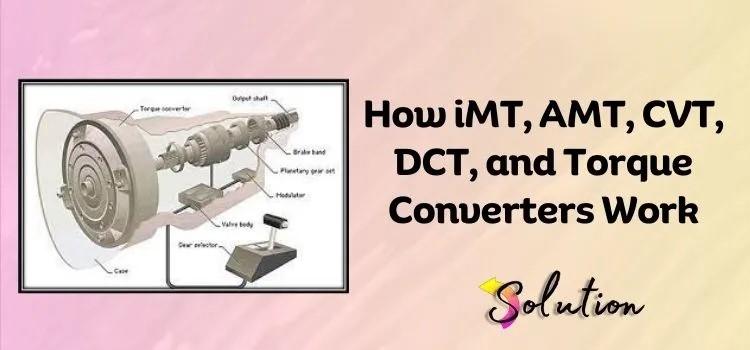The evolution of automotive technology has transformed how we drive, and nowhere is this more evident than in the variety of Automatic Transmissions: iMT, AMT, CVT, DCT & More available today. From semi-automated systems to high-performance dual-clutch gearboxes, understanding the differences can help you make smarter choices when buying or maintaining a car. Let’s break down the major types: iMT, AMT, CVT, DCT, and other popular transmission systems.
1. iMT (Intelligent Manual Transmission)
What it is:
An iMT offers the gear-shifting experience of a manual transmission without a clutch pedal. You change gears manually, but the car manages clutch engagement automatically.
Pros:
Gives a manual driving feel without the hassle of a clutch
Typically more affordable than fully automatic options
Improved fuel efficiency over traditional automatics
Cons:
Still requires the driver to shift gears manually
Not as smooth as traditional automatics in traffic
Best For:
Drivers who enjoy manual gear changes but want easier driving in traffic.
2. AMT (Automated Manual Transmission)
What it is:
An AMT is essentially a manual gearbox controlled by a computer. It automates both the clutch and gear shifts.
Pros:
Cost-effective automatic option
Better fuel efficiency than torque converters
Simple and inexpensive to maintain
Cons:
Gear shifts can feel jerky
Performance not as refined or quick as other automatics
Best For:
Budget-conscious drivers looking for an automatic driving experience.
3. CVT (Continuously Variable Transmission)
What it is:
CVTs use pulleys and a belt to provide a seamless range of gear ratios, meaning no traditional "shifting" of gears.
Pros:
Extremely smooth acceleration
Often delivers better fuel economy
Ideal for city driving
Cons:
"Rubber band" acceleration feel may not appeal to enthusiasts
Repairs can be costly if issues arise
Best For:
Urban commuters and those prioritizing smoothness and efficiency.
4. DCT (Dual-Clutch Transmission)
What it is:
A DCT uses two clutches to pre-select the next gear, offering lightning-fast gear changes without interrupting power flow.
Pros:
Very fast and smooth gear shifts
High performance and fuel efficiency
Excellent for spirited driving
Cons:
Can be expensive to repair
May be jerky at low speeds or in traffic
Best For:
Performance enthusiasts and those who value quick, sporty driving dynamics.
5. Torque Converter Automatic
What it is:
The classic automatic gearbox, using a torque converter to manage power flow from engine to wheels.
Pros:
Smooth and reliable
Handles high torque well
Proven technology
Cons:
Heavier and less efficient than newer systems
Generally costlier and more complex
Best For:
Those seeking a refined driving experience with minimal driver input.
Conclusion: Which One Should You Choose?
| Transmission | Key Benefit | Ideal For |
|---|---|---|
| iMT | Manual feel, no clutch pedal | Enthusiasts in traffic |
| AMT | Affordable automatic | Budget-conscious drivers |
| CVT | Smooth, efficient | City commuters |
| DCT | Performance & speed | Sporty drivers |
| Torque Converter | Comfort & reliability | Long-distance or premium driving |
Your perfect transmission depends on your driving habits, budget, and personal preferences. While the market keeps innovating, the growing choices empower drivers to select a system that truly fits their lifestyle.
